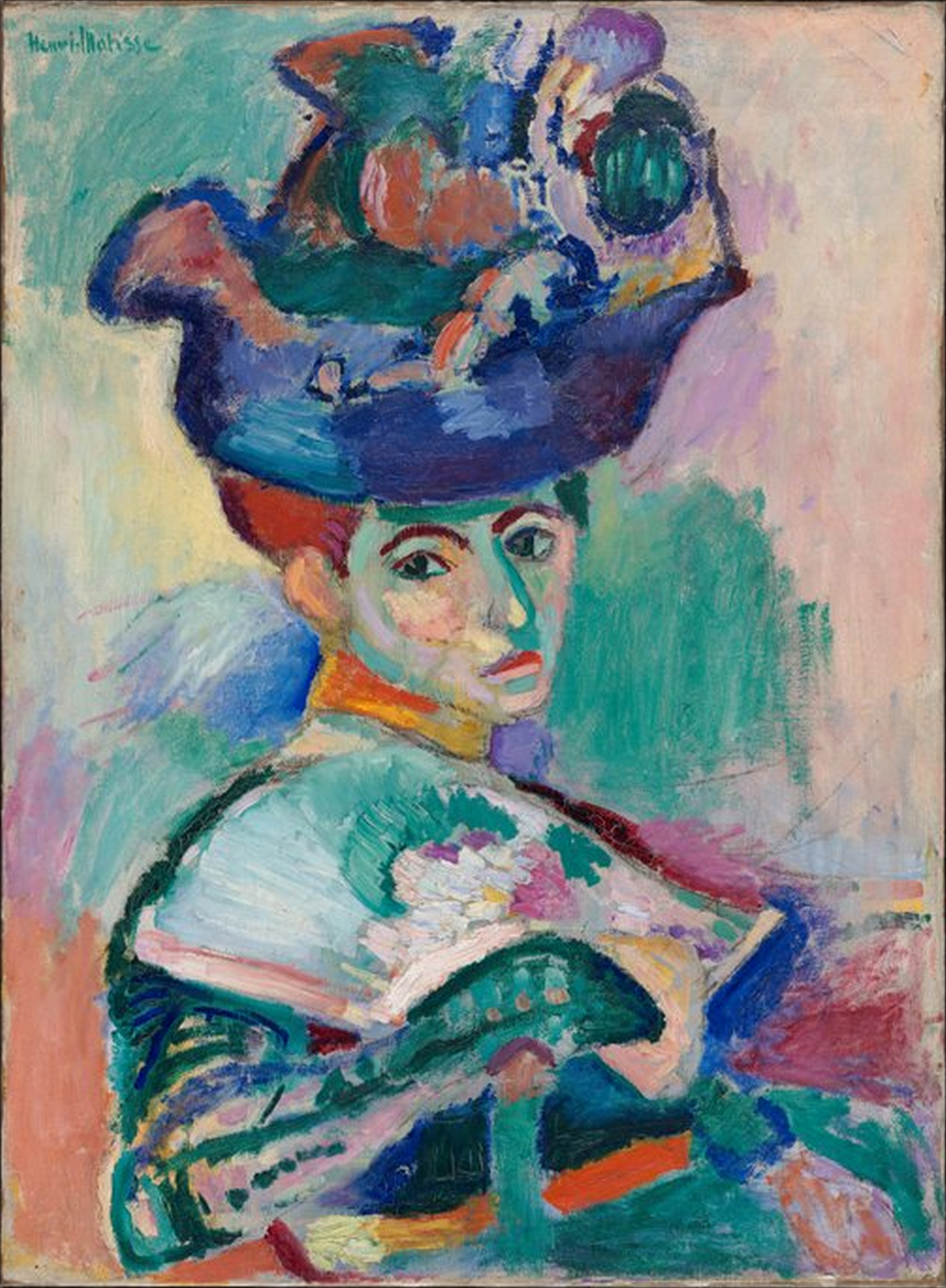The most interesting part of the Stein collection exhibition is the artistic exchanges between Matisse and Picasso during their early career fostered by the Steins' at the Rue de Fleurus, the Stein's residence and informal salon in Paris. The influences from these exchanges during those early years in the artists' artistic life played an important role in their styles.
After viewing the Woman with a Hat by Matisse at the Stein's, Picasso responded with Boy Leading a Horse. Viewing these two milestone works in the art history side by side makes these two paintings from contrasting styles especially interesting. On one is the very bold and vibrant green paints on the Woman's face and the strong strokes; on the other is the muted palette and smooth strokes of the boy and the horse. Both conveys a melancholy mood though expressed differently.
The exchanges between Matisse and Picasso remind me of a later interaction between Picasso and Chang Dai Chien, the greatest Chinese traditional painting master and an innovator like Picasso. Their 1956-meeting was viewed as "a summit of western and eastern art". In the many accounts of their meeting, what struck me is the description of Picasso asking for Chang's critique of his works in Chinese painting following the style of another Chinese master, Chi Pai Shih. Picasso was 75 years old at the time and his passion and hunger for art and learning was not less than a child. A few years later, Picasso sent Chang his latest practice of Chinese painting and received the comment from Chang that he made big improvement. (source from Xing Zou de Hua Di - Zhang Da Qian Piao Bo de Xia Ban Sheng translated to The Travelling King of Painters - The Drifting Later Years of Zhang Da Qian)
The stories told in the Stein exhibition became a great prologue to de Young's Picasso exhibition. I saw the early influences of Picasso's work, his artistic passion and versatility exhibited during those early years and his rising career through one patronage family, whose life story was equally interesting. I'm not a big fan of the Cubism or a lot of the modern abstract artworks. However, I can now understand why Picasso was the greatest and most influential artist of the 20th century. He constantly drew from others for inspiration and created his own interpretation. Like he said, he didn't paint what he saw, he painted what he thought. His works do not demonstrate the best techniques but the expressive feelings and creative explorations he had. He broke the boundaries of art in many ways and freed the minds of many generations of artists that followed.
He experimented bringing 3-dimension architecture and viewing into 2-dimension medium. He included viewers in his creation process that required viewers' interpretation to complete his creation. He was the first artist who used real-life objects in his artwork. I see different mediums, materials, art forms being used, through which he expressed his thoughts and feelings. As a result, he was not confined to one style or one type of medium. He switched between different styles and mediums freely and the purpose was one: to use the best way to express through his work.






No comments:
Post a Comment